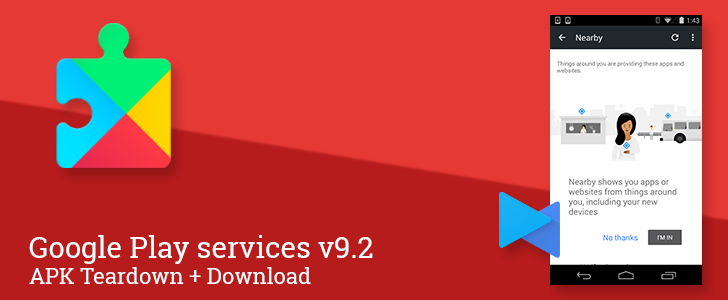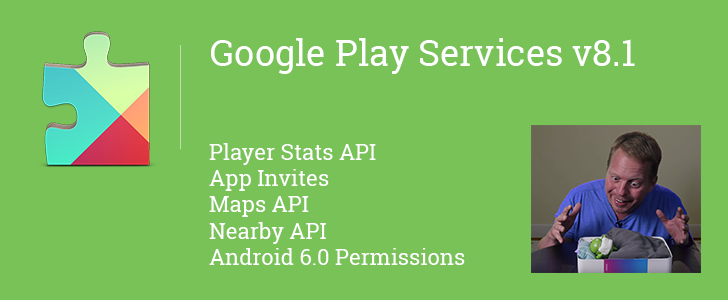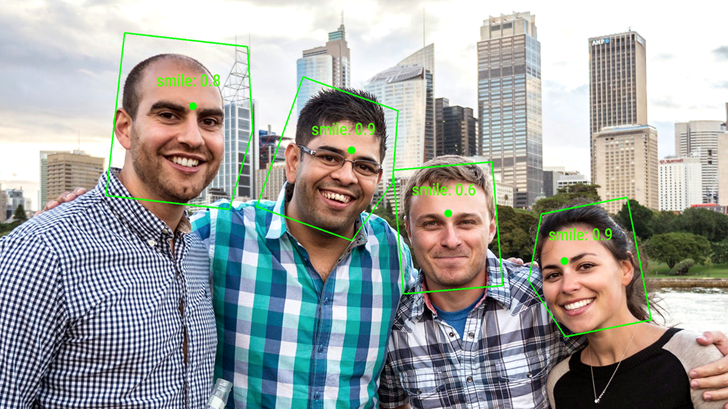latest
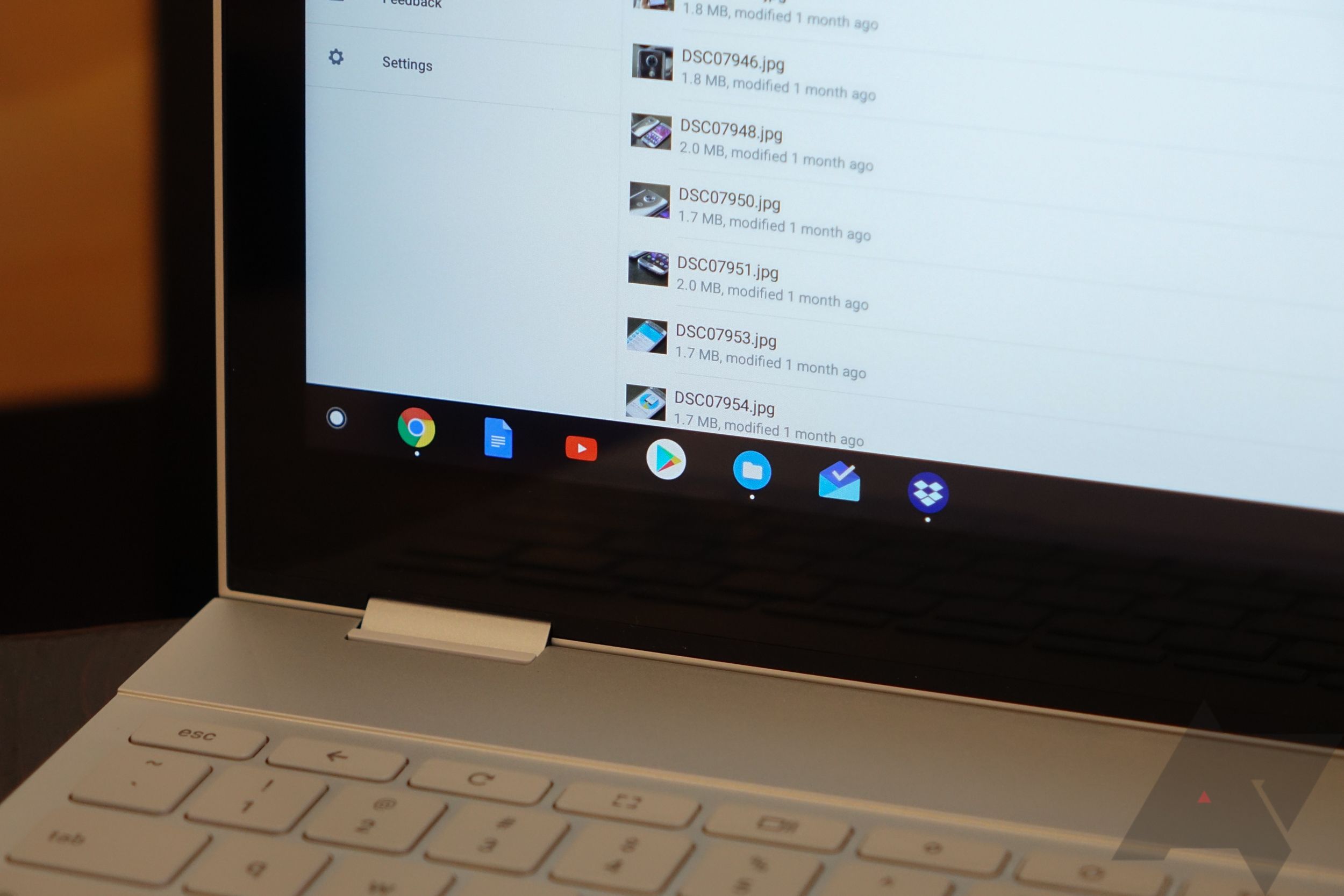
Last year, Google released v2.0 of its "Nearby Connections" API, which allows for your gadgets to communicate with other devices in close proximity via Wi-Fi and Bluetooth. It was a part of the overall "Nearby" package, which also includes a few other systems for more specific applications, including messaging and notifications. According to a pair of commits recently spotted by the folks at XDA Developers, these Nearby APIs may be coming to Chromebooks.

When the Nearby API started rolling out to Google Play Services in July of last year, it had a lot of potential and promise. It made it so devices could talk to each other based only on their proximity and regardless of whether or not they were on the same WiFi network (in certain applications) or paired via Bluetooth. That's why we've often said it's the genius feature no one is using.
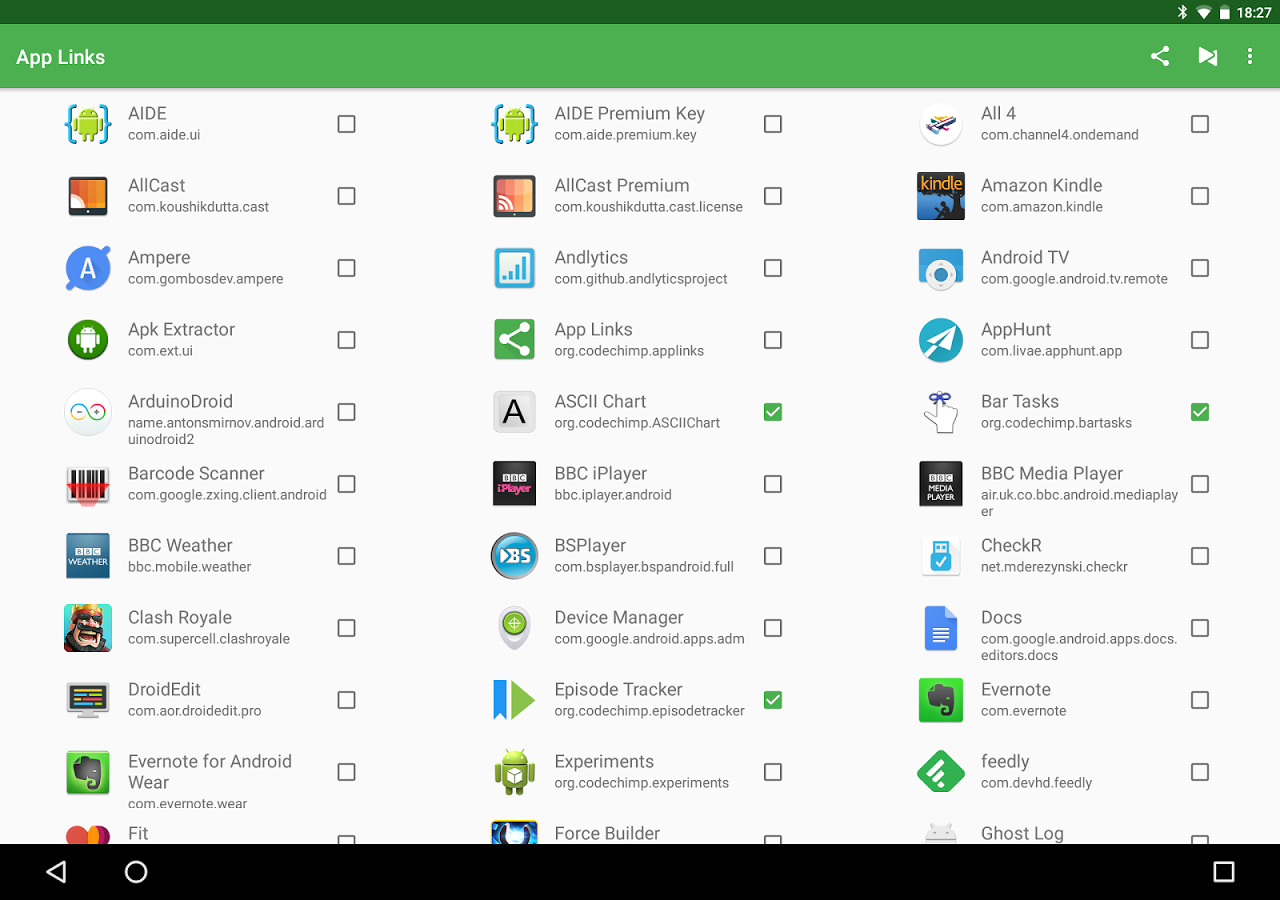
We've spent months with barely any example use of Google's Nearby API by third-party apps, but in only a couple of days several apps have popped up with this proximity sharing method. First it was Radon for sending regular links, then Card Case for contact details, and now it's app links' turn with an app called, predictably, App Links.
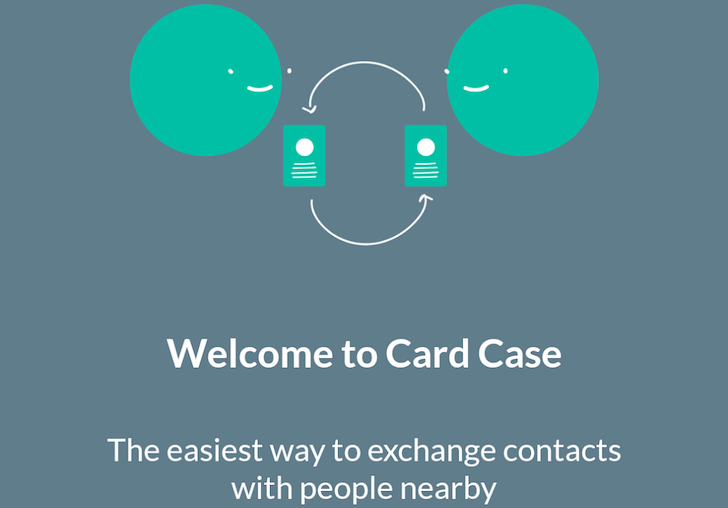
The Nearby API is arguably one of the coolest features Google introduced in Play Services last year, but its potential remains largely untapped. Pocket Casts and Trello were one of the first apps to use it for sharing, but very few apps have since followed suit and even less have been built solely to utilize this new capability. Last week, we heard of Radon, an app that shares links to nearby devices, and today we have another new app that does the same for contact cards: Card Case.
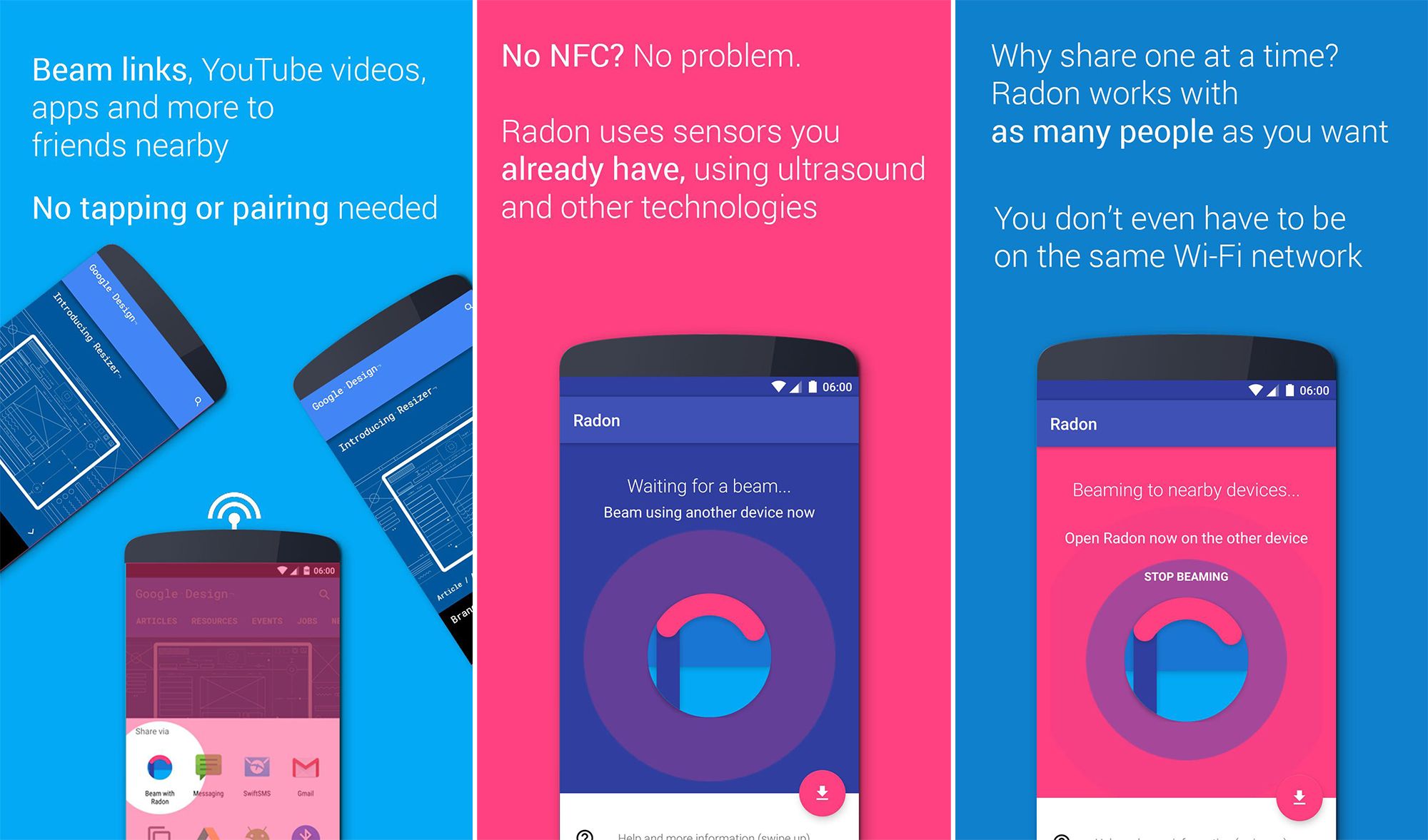
Google's Nearby API is one of the coolest things developers aren't using. I mean, they are, but not as often as I had hoped. Radon is a new sharing app based on Nearby, and it's pretty cool. Just share something to Radon, and it will search for target devices in close proximity with WiFi, Bluetooth, and ultrasonic pulses.

Trello is a service that allows teams of people to delineate tasks and assignments. I've used it for various projects, and it's surprisingly effective once you get used to its somewhat unconventional drag-and-drop card/stack system. The design is most effective for large teams that don't often get everyone in the same place. But what about the times when you do happen to be close to your teammates? Enter Google's fancy audio/Bluetooth/Wi-Fi connection API, Nearby, which was integrated into Google Play Services last month.
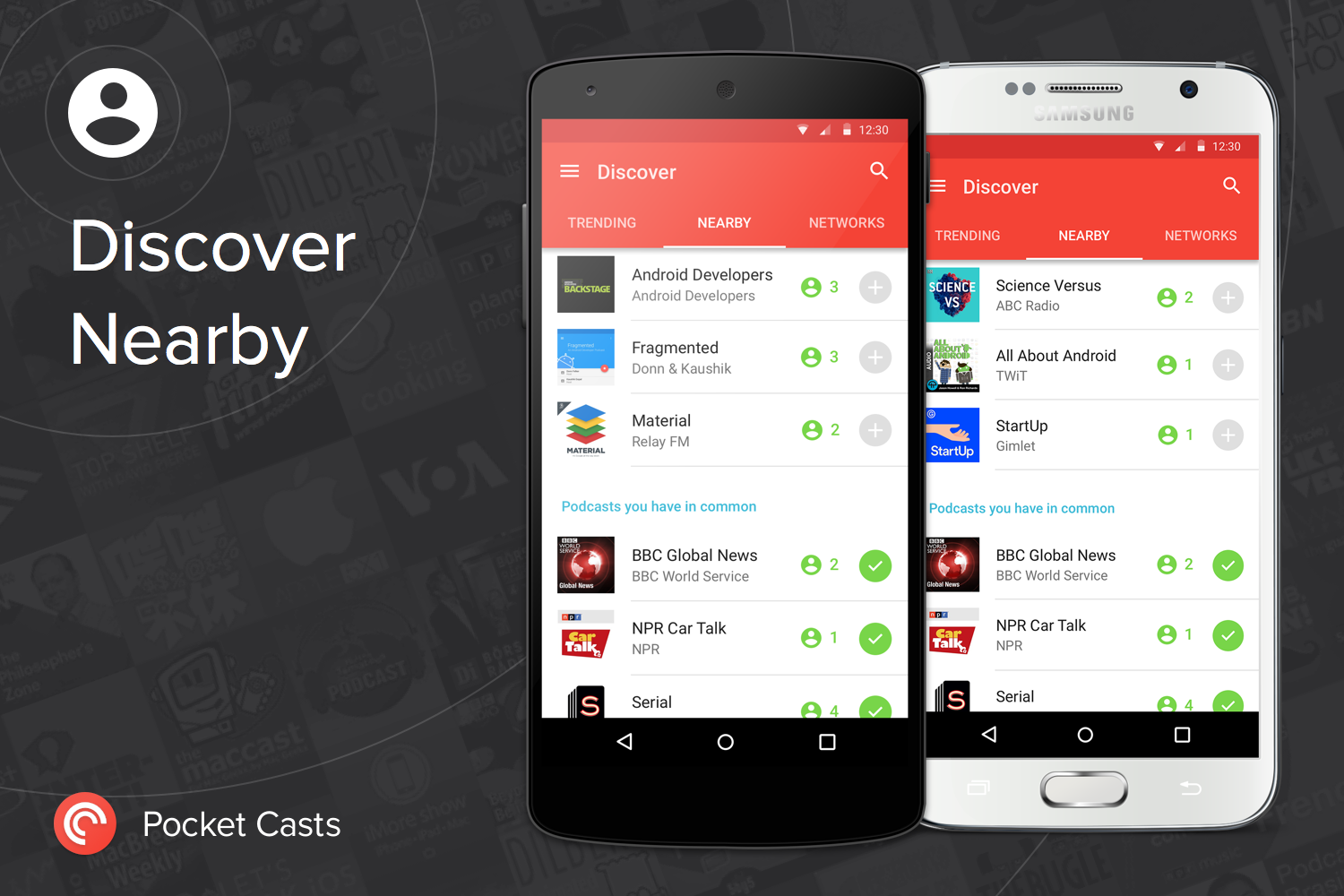
Pocket Casts is one of the finest podcast apps around largely because it's always been quick to take advantage of new Android features. In the latest update, the developers are already using the Nearby API to make podcast discovery easier. Just fire up the Nearby feature, and you can see what those around you are listening to.
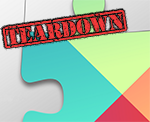
The long-awaited Nearby is on the horizon, and it will be launching with Play Services 7.8. The APK is in the midst of its rollout right now. It contains a few elements of Nearby, and surely plenty of bug fixes and tweaks, but there are also plenty of interesting pieces hidden inside, as well. After a quick long examination, we've got the interesting bits and pieces ready for viewing, along with some theories about what it all means. It's time for a teardown!
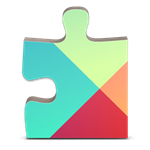
Google finally let the curtain fall on the long-anticipated Nearby API that enables detection and easy connection with other devices in close proximity. The new API was announced with Play services v7.8, but the SDK won't be released until that version has gone into wide release, which will happen in about two weeks. This gives Google a chance to identify some of the bugs that may have slipped through during development, and collect feedback from a larger set of devices in the real world. Of course, we've also got links to download the apk if you don't feel like waiting.

Contextual awareness is one of the pillars of Google's recent push in mobile communications. You don't have to look far to see that: Google Now has been getting better and better at "guessing" the information that you need before you even look for it. But when it comes to location, we all know that it can use some help. Not just Google Now, actually. Most current location techniques are quite lacking indoors, underground, or simply fail to differentiate between you standing in front of a bus on one side or the other of the street. That's where beacons, which are small Bluetooth Low Energy devices, come into play by providing a quicker and more granularly precise location information. But that's not all. Beacons can help transmit location-specific data to your phone, trigger a certain functionality in an app, or show relevant information.

